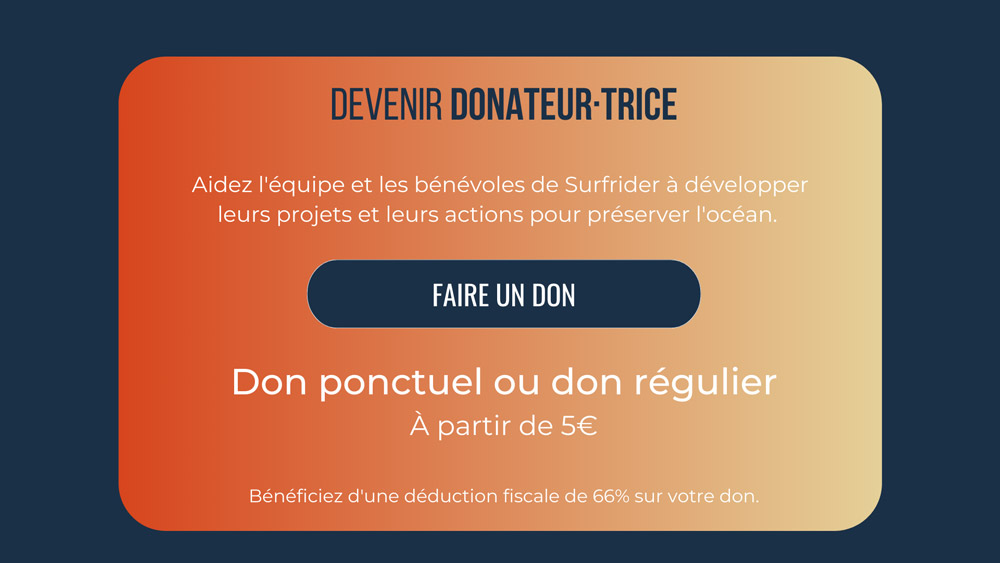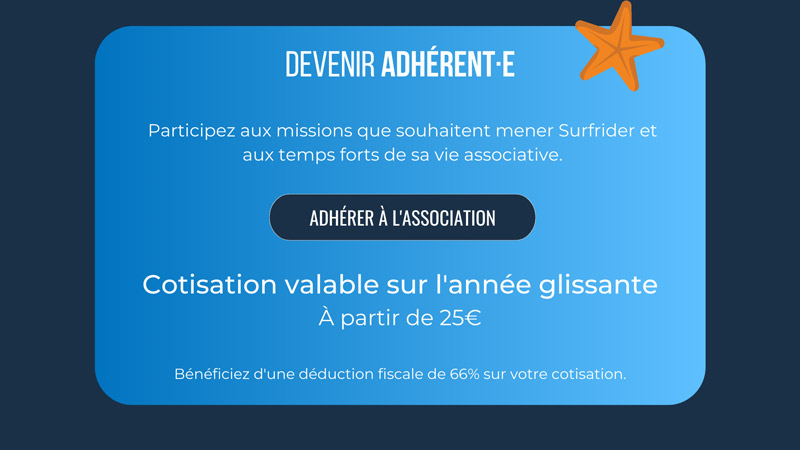Coastlines are never frozen, they are constantly shaped by natural phenomenon such as tides, swell and wind. During this time of year when more and more winter storms appear, coastlines are also modified and are victims of erosion or marine submersion. Not aware of these risks, people are sometimes facing some dangerous situations because of these worsening phenomena. In order to inform about these dangers and prevent them, Surfrider Europe is expanding its erosion map gathering more illustrated examples and testimonies.
Erosion, Marine submersion… and climate change
Coastal erosion is a phenomenon that can be seen on sandy or rocky coastlines. It translates into a recoil of coastlines, meaning the limit between maritime and continental areas is pushed back towards the lands, following up on the loss of material: sands, rocks, or sediments.
Marine submersion is another phenomenon which corresponds to a temporary or permanent flooding of a coastal area by the Ocean. It generally occurs after a storm and can cause the destruction of houses, agricultural lands and/or natural (dunes) or artificial (sea walls) protection structures.
Both phenomena tend to amplify during the winter and even more so due to climate change. Indeed, climate change causes strong melting of land ices and warming of waters, themselves provoking a rise in
Ocean’s levels. During high tides and strong swells, waves’ impact on the shore is amplified, strengthening erosion and marine submersion phenomenon.
When natural phenomenon becomes a coastal risk
These natural phenomena become risks when they are threatening environmental, human, economical, societal and patrimonial stakes. When people settle too close from the coastlines, ignoring that these natural phenomena can put them in danger, they create the risk.
In France, Le Signal building illustrates perfectly this notion of risk. Built in 1967, 200m away from the Atlantic Ocean, in the framework of a touristic planning, the building constructed on a sand dune is now only tens of meters away from the water, because of erosion. In January 2014, after strong winter storms increased the process, flat owners had to leave the premises. 6 years later, in July 2020, the Senate voted for a compensation of 70% of their goods, in value, without considering the risk. Indeed, today, erosion is still not considered as natural catastrophe, the State thus doesn’t compensate victims of this phenomenon. The Signal case isn’t isolated, but its inhabitants are one of the rare that will be given compensation following this type of event, mostly because the project was carried on by the State and not a private land developer.

©Nicolas Turcat – AFP
Human activity: both victim and responsible
To avoid reaching this point, coastlines management strategies are being implemented upstream by local Authorities. Erosion and marine submersion being inevitable, people are the ones who must adapt to natural risks, and not the other way around.
4 risk management strategies are currently existing:
Active striving: often detrimental to the environment, that is for example the chosen solution in La Faute-sur-Mer en Vendée, after Xynthia’s storm in 2010, with the reinforcement of seawalls.
Natural process adjustment or reinforcement: the Mediterranean coast management style with restoration and protection of dunes on sand coastlines can be stated as an example.
Stakes resettlement or strategic retreat: difficult to set-up because of its cost and impact on population, that solution has been implemented in Criel-sur-Mer in Normandy to face cliffs’ collapsing.
Passive surveillance: monitor the coastlines over time, this is the strategy adopted on Erretegia’s beach in Bidart, in Pyrénées Atlantiques, in the absence of any stakes.
All these information and even more are gathered on an interactive map developed by Surfrider Europe. To raise awareness on this coastal issue and share information to the public, the organization has created this tool to allow each of us to discover sites where coastal risks exist today and to learn about each unique situation through personal testimony, image comparison over time and implemented strategies. The map is currently being piloted in France though it is soon to be widened to Europe to help all citizens take smart actions accordingly. Thanks to this map, the organization wishes to remind that the Ocean has its own laws and that coastlines are living environment that need to breathe. It is time to learn how to live in harmony with the Ocean, and not against it.


